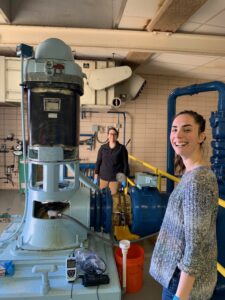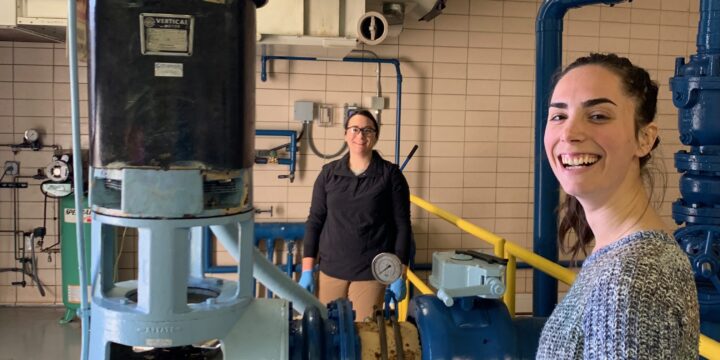Increased use of more precise testing methods for the low levels of naturally occurring radium in public drinking water supplies as they relate to public health compliance will offer better understanding of long-term water withdrawal trends on the presence of the contaminant found in the aquifer system that underlies much of Wisconsin.
From 2019 to 2020, radium levels that exceeded public health standards were noted in 116 of Wisconsin’s 611 municipal water systems. These conditions meant costly treatments. In some instances, water managers had to consider drilling new wells.
“Although trends vary by location, some water managers are noticing combined radium levels in this aquifer, known as the Midwestern Cambrian-Ordovician aquifer system, generally increasing,” said Madeleine Mathews, a UW-Madison graduate now doing post-doctoral work at the Institut de Physique du Globe de Paris.

Perhaps the best-known Wisconsin example of the impact from radium in drinking water is in Waukesha, where elevated levels and historic drawdown to the “older” more radium-heavy water in the aquifer has meant the municipality secured unprecedented and binationally approved permission to pump drinking water from Lake Michigan, even though the municipality lies outside of the Great Lakes basin.
The U.S. Environmental Protection Agency (EPA) regulates radium because long-term ingestion is associated with development of bone cancer and other diseases. The current EPA-approved method to test for radium is to count radioactive decay in samples. Mathews and her research colleagues have demonstrated the benefits using mass spectrometry, which counts the mass composition of radium in a water sample, for analysis instead.
The research team of Mathews, along with Matt Ginder-Vogel, Civil and Environmental Engineering professor at the University of Wisconsin-Madison; Sean Scott, scientist at the Wisconsin State Laboratory of Hygiene; and Randy Hunt, chief science officer at the Upper Midwest Water Science Center at U.S. Geological Survey, published the findings in the May/June 2022 issue of the journal AWWA Water Sciences, https://doi.org/10.1002/aws2.1291
The paper provides details on a short-term pumping test conducted in Madison. Operators shut down one of the city’s drinking water wells for nearly 11 days, then pumped from it continuously over 48 hours, enabling a collection that was deemed representative of the current aquifer conditions. Mass spectrometry was then used to measure radium. A comparative test of the same sample using radioactive decay counting was also conducted.
“The mass spectrometry method for measuring radium in water,” Ginder-Vogel said, “offers a more reliable sense of the variability of radium concentrations over time. That leads to the major take-home message from this research: water utility managers can reach better decisions about the radium in their source water, leading to quicker and clearer options to remedy the conditions.”
The Wisconsin Groundwater Research and Monitoring Program, of which the University of Wisconsin Water Resources Institute (WRI) is a part, funded this work through another partner, the Wisconsin Department of Natural Resources. This initial research has contributed to a further study that has been supported by WRI, one based in Fond du Lac.

